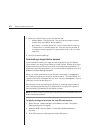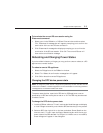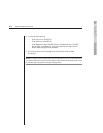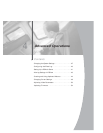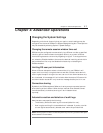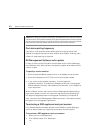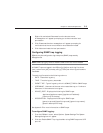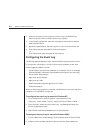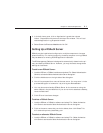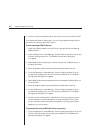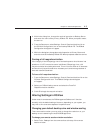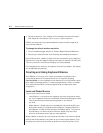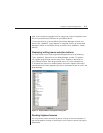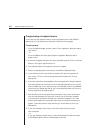
Chapter 4: Advanced Operations 39
Right-click and select Disconnect from the shortcut menu.
A message box will appear prompting you to disconnect the local
port session.
3. Click Disconnect. Another message box will appear prompting for
verifi cation that the current connection should be terminated.
4. Click Yes to terminate the local port session.
Configuring SNMP trap logging
DSAuth may be configured to log enterprise (SNMP) traps sent by
DS appliances.
NOTE: SNMP trap logging cannot be enabled if SNMP services has not been installed.
All SNMP Traps are logged in the DS[mm][yy][dd].csv audit log file, where
[mm] is the month, [dd] is the day and [yy] is the year when log entries were
last added.
The audit log file contains the following columns:
• DATE - Date of the log entry
• TIME - Time the log entry was made
• EVENT TYPE - Type of log entry, which is 9 SNMP_TRAP for SNMP traps
• USERNAME - Username of the user who created the trap, or “Unknown
Username” if the username is not given
• DEVICE_PORT - Displays the following for SNMP traps:
Appliance:[appliance name]::[appliance IP address]:
[community of the trap]
• DESCRIPTION - Displays the following for SNMP traps:
[generic trap code]:[specifi c trap code]::[generic trap name]::
[specifi c description of trap]
See Appendix E for more information on SNMP traps.
To confi gure SNMP logging:
1. From the DSAdmin menu, select Options - System Settings. The System
Settings dialog box will appear.
2. Click the Enable SNMP Trap Log checkbox to log SNMP traps over UDP
port 161.




